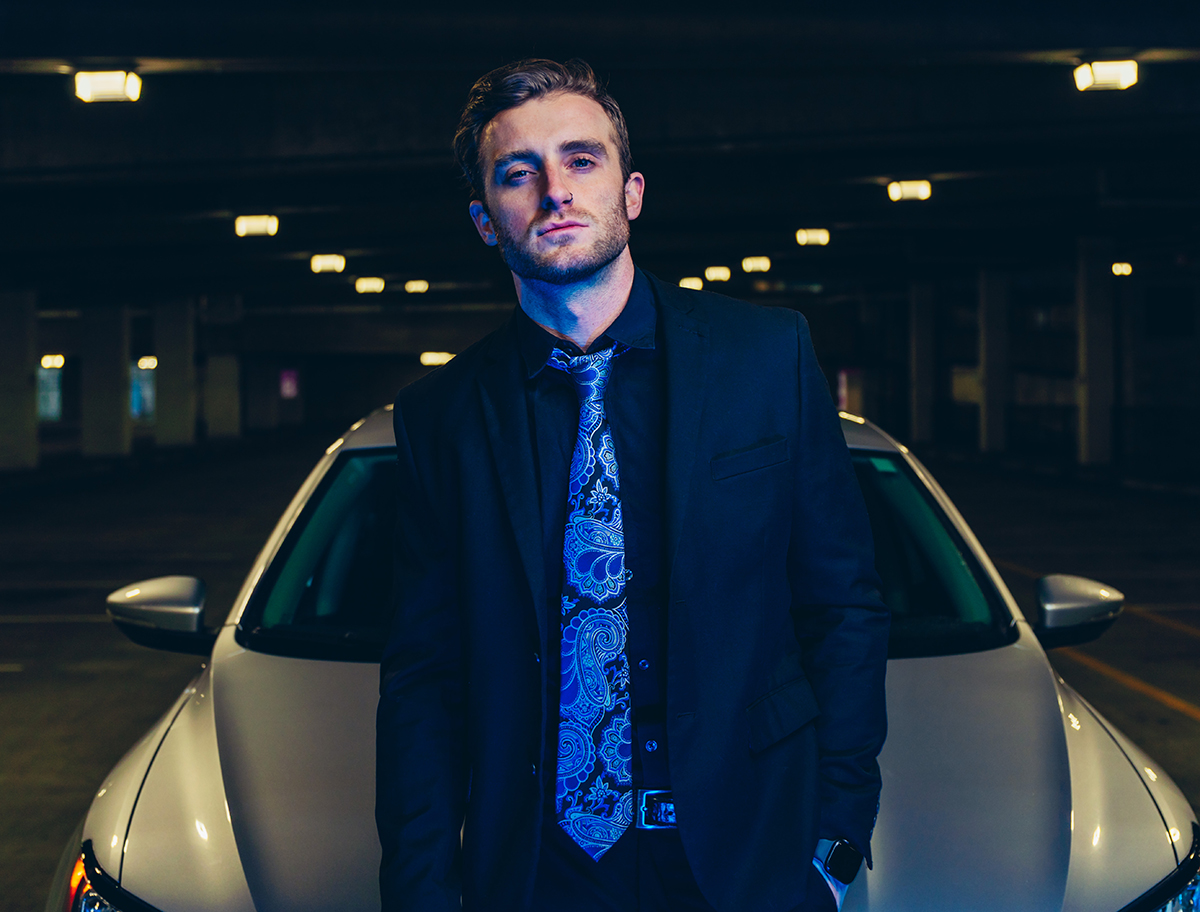By Jenn Gidman
Images by Courtney Hickman
Courtney Hickman keeps his clients relaxed and his portraits crisp with the Tamron 70-180mm F/2.8 telephoto zoom.
When Courtney Hickman’s daughter started taking gymnastics, that’s when he knew he might need to get a camera. “She’s a state champion and junior Olympian now, but it was at her first meet when I realized that my cellphone probably wouldn’t cut it for taking pictures,” the retired veteran from Washington state says. “The floor was so huge and wide, and sometimes the athletes were competing all the way across the room. So I picked up a DSLR, and that’s when I fell in love with photography. There was just something about being able to freeze a moment in time that was so real and so alive.”
Courtney soon segued from sports photography to portraiture, bought a Sony mirrorless camera, and late last year launched his own photography studio, C-Sharp Images. “C-Sharp was my nickname growing up, and that’s also what I pride myself on in my images—the sharpness—so that name seemed a natural fit for my company,” he says. “I want every photo I take to be crisp. I want viewers to be able to see every facet of my subjects, all the way down to their eyes, whether I’m photographing one, two, or more people at a time.”

70-180mm (70mm), F/4, 1/250 sec., ISO 100
To achieve the look that he’s known for, Courtney uses the Tamron 70-180mm F/2.8 Di III VXD on his Sony mirrorless camera, the lightest and most compact telephoto zoom in its class. “One of my favorite things about shooting portraits with the 70-180 is the shallow depth-of-field I’m able to achieve, which is why I appreciate having that F/2.8 aperture,” he says. “I like being able to back all the way up to compress everything in the scene and get that beautiful bokeh in the background. The versatility the lens offers me allows me to experiment with different focal lengths. I especially love that I’m able to press in super-close and shoot almost macro-style photos.”

70-180mm (150mm), F/2.8, 1/200 sec., ISO 500
But it’s sharpness that’s really critical to Courtney, and the 70-180 delivers. “Glass is everything to me, and to get your hands on the best glass can be an expensive proposition,” he says. “To have this level of sharpness at such an affordable price point is amazing.”

70-180mm (169mm), F/2.8, 1/250 sec., ISO 100
Courtney will use natural light if it complements what he’s trying to capture in a photo, but he primarily shoots with strobes. “I love to manipulate the ambient light and use strobes to highlight my subjects, with the background playing the role of supporting cast,” he says. “Shooting this way also allows me to stay versatile—it doesn’t matter if it’s noon or night.”

17-70mm (32mm), F/2.8, 1/50 sec., ISO 100
How he chooses to photograph the person in front of his camera depends on the vibe they’ve decided on together. “If we’re outdoors, I tend to highlight more of the environment,” he says. “Here in the Pacific Northwest, we’re lucky enough to be surrounded by lots of gorgeous wooded areas and lush landscapes, which often softens things up in the background and doesn’t overtake the subject. On the flip side, if we’re, say, shooting in a gym, I might want to actually boost the lighting and intensify things a bit. I don’t show up to simply take a photo—I create the photo.”
To help build rapport with his clients to prompt a natural, relaxed session, Courtney first holds a consultation where he asks questions and emphasizes one key point. “I give them permission to be who they are,” he says. “People will often think when they’re in front of the camera that they have to ‘act’ or pretend they’re some other character they’re not, and that’s not what I’m looking for. I think about Uncle Rico stiffly posing for pictures in Napoleon Dynamite—that’s not what I’m trying to emulate. I’ll offer some basic small pointers, but everyone who does a session with me says they feel like they’ve known me for years.”
It’s most important that, during his consultations, Courtney learns each client’s backstory. “Whatever’s important to you is important to me,” he says. “Learning what they’re passionate about is a crucial way to catch a glimpse of who they are. I had one young lady come in who wanted to rebrand herself because she’d lost 180 pounds. This was her moment of reintroducing herself to the world, through a new series of photos. My sessions are not in-and-out ventures where anyone feels pressed for time. I stay close with many of my clients; some even become like family.”

70-180mm (102mm), F/4, 1/125 sec., ISO 100
Whether he’s photographing men or women, Courtney will experiment with all different angles. “I know male subjects tend to be photographed from a lower angle, to create a more imposing look, but I take pictures of women from those lower positions as well,” he says. “No matter who the subject is, shooting from that angle makes them look larger than life, which gives them a boost of confidence when they see the photo. I also enjoy zooming in and capturing my subject from the shoulder up. The eyes are the gateway to the soul, so by coming in close like that, I’m offering my viewers access to that gateway.”

70-180mm (135mm), F/2.8, 1/200 sec., ISO 100
And that’s key to how Courtney wants to portray his subjects. “That’s why I want the people I photograph to be as genuine and real as they can be,” he says. “That comes through in their eyes. That way, if others who’ve seen their photos meet them in person one day, it will all add up. The person they see in the photo will be the same person standing in front of them. It will all make sense.”
